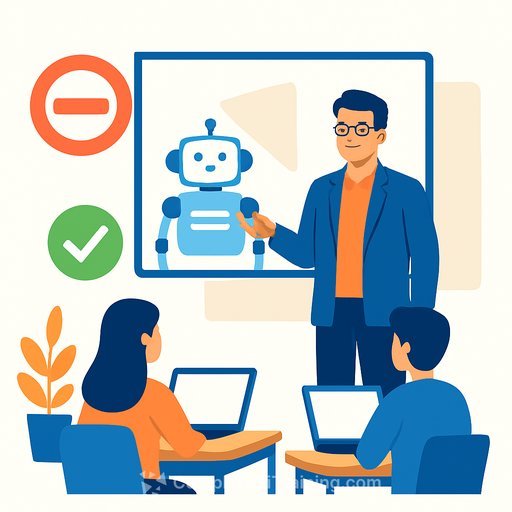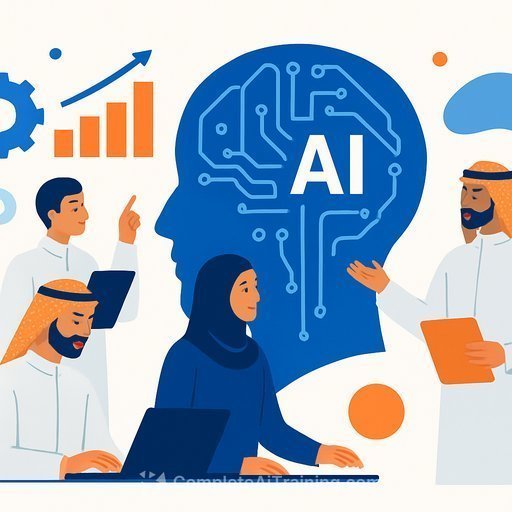India must boost AI education or risk falling behind, warns NITI Aayog
India is at risk of losing ground in AI talent. A new policy note flags a weak academic pipeline: fewer than 500 AI-related PhDs a year, limited AI departments across most colleges, and fragmented research ecosystems.
For education leaders, this is a near-term execution problem. Without stronger programmes across schools and universities, India will keep training students for jobs that move abroad.
The talent gap in numbers
PhD output in AI is below 500 annually, far behind the US and China. The IndiaAI PhD fellowship supports only 100 scholars a year, a small share of what is needed.
Nearly 44% of India's top AI researchers work overseas, pulled by well-funded labs, clear career paths, and strong research networks.
NITI Aayog recommends decisive expansion across departments, funding, and industry links to reverse this trend.
Where the pipeline breaks
- AI programmes are concentrated in a few elite institutions; most colleges lack dedicated AI departments and curricula.
- Interdisciplinary AI research is sparse, limiting collaboration with health, agriculture, manufacturing, and public policy.
- Faculty exposure to industry-scale problems and modern tooling is limited.
What schools can implement this year
- Add AI literacy from Classes 6-12: data basics, statistics, algorithmic thinking, ethics, and project-based problem solving.
- Set up low-cost AI labs: shared GPUs, curated datasets, and sandboxed notebooks; start with open-source stacks.
- Launch teacher upskilling: short modules on prompt design, classroom automation, and assessment integrity.
- Run AI fairs and community projects tied to local challenges-health screening, crop advisory, traffic safety.
What higher education can do in 6-12 months
- Establish specialised AI departments or centres of excellence with dedicated faculty lines and lab budgets.
- Deploy AI+X tracks: AI for healthcare, agriculture, materials, education, law, and public administration.
- Update core curricula: linear algebra, probability, optimisation, data systems, ML, DL, MLOps, safety, and security.
- Create joint appointments and sabbaticals with industry labs; host semester-long practicum courses with real datasets.
- Expand funded PhD seats and scholarships; pair every fellowship with a clear research pathway and mentorship plan.
Policy levers that change outcomes
- Scale PhD fellowships beyond current levels; tie funding to publication, open-source, and patent outcomes.
- Offer compute credits and shared national GPU clusters for universities and accredited schools.
- Incentivise faculty recruitment and returnees with tenure-track clarity, startup grants, and lab setup support.
- Enable fast-track visas and visiting appointments to bring global researchers to Indian campuses.
Global playbook to keep in view
The US couples elite R&D, strong universities, and open immigration to draw talent. The UK's Global Talent Visa and similar programmes in China and Taiwan show how structured incentives anchor research leaders.
India can adapt these lessons: competitive grants, mobility schemes, and clear research careers that make staying-and returning-viable.
State-level action: Telangana's early move
The Telangana Education Commission plans to introduce AI at the school level and set up dedicated AI labs. This is the right pattern: early exposure, practical labs, and a staircase into higher education and research.
Metrics that education leaders should track
- AI PhDs awarded per year and per state; percentage of graduates entering research roles.
- Number of AI departments, AI+X programmes, and interdisciplinary labs created.
- Faculty-industry exchanges, funded projects, and published outputs.
- Researcher retention and return rates; time-to-set-up for new labs.
- Student project-to-product conversions: patents, startups, and deployed pilots.
Immediate next steps
- Form an institutional AI task force with a 12-month roadmap and monthly publishable milestones.
- Reallocate part of CSR and grant budgets to compute, fellowships, and faculty development.
- Standardise an academic integrity policy for AI use and deploy AI-enabled plagiarism and proctoring safeguards.
- Broker MOUs with hospitals, agri universities, and manufacturing clusters for datasets and capstone problems.
Upskilling paths for staff
If you need quick wins, start with targeted courses for teachers, administrators, and lab staff. Curated options by job role can accelerate adoption without stalling core academics: AI courses by job role.
The window is narrow. With clear curricula, funded research pathways, and industry ties, India can build a homegrown talent base that leads future AI advances. Delay, and the talent leaves-along with the opportunities.
Your membership also unlocks:






